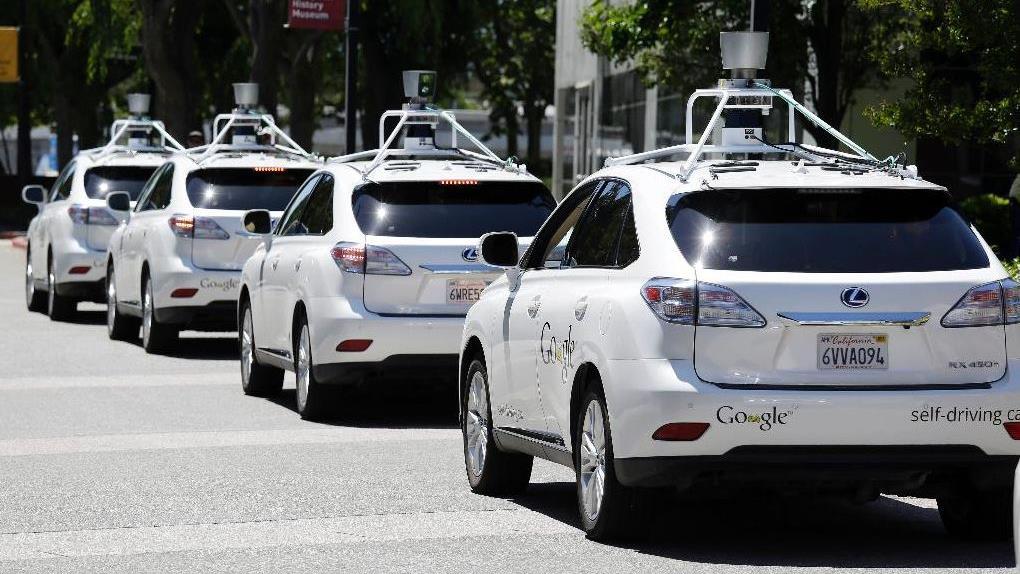Transportation Secretary Chao, US CTO Kratsios: Leading on transportation innovation and safety with AV 4.0
The Trump administration is taking another important step to advance the safe and innovative development of AVs
Our roads have grown safer and safer thanks to the power of American ingenuity. From the invention of the airbag to the development of advanced crash-avoidance technology in cars today, the United States has a proud record of leadership in transportation innovation and safety.
As American technological pioneers develop automated vehicles (AVs), we once again have the opportunity to transform how we travel, increase economic prosperity, and improve the quality of life for all Americans. Most importantly, AVs have the potential to improve safety significantly by reducing crashes caused by human error, including crashes involving impaired or distracted drivers. In the end, that means saving lives.
AMERICAN DRIVERS WARMING TO SELF-DRIVING CARS: SURVEY
On Wednesday, January 8, the Trump administration is taking another important step to advance the safe and innovative development of AVs with the release of a new framework for the development and integration of automated vehicle technologies: Ensuring American Leadership in Automated Vehicle Technologies: Automated Vehicles 4.0 (AV 4.0). The White House and the U.S. Department of Transportation (USDOT) worked together to develop AV 4.0, providing for the first time Government-wide principles to guide Federal AV policy.
Beginning in 2017, USDOT released ADS 2.0 and AV 3.0, putting forward guidelines and principles for AV testing, integration, and innovation geared towards USDOT and the private sector. Since then, the United States has seen important growth in its automated vehicle sector, with AVs being tested by more than 80 companies in 34 states across the country. However, as more and more federal agencies saw opportunities to integrate AVs into their work, we faced a growing need for unified guidance on how the federal government should approach AV technologies.
UPS HAS BEEN TESTING SELF-DRIVING TRACTOR-TRAILERS FOR MONTHS BETWEEN THESE CITIES
For example, in its mission to explore the vast reaches of space, NASA is developing technologies related to human-system integration and system-level autonomy. The U.S. Postal Service, which operates the largest civilian fleet of vehicles in the country, is studying how AVs could further improve its safety and operational efficiency. And the Department of Energy is conducting research on how AVs could reduce traffic congestion.
To ensure all of the important AV activities across 38 federal agencies fall under one strategy, AV 4.0 establishes 10 principles under three core interests for the federal government’s development and integration of automated vehicles: prioritize safety and security; promote innovation; and ensure a consistent regulatory approach. Guided by these principles, federal agencies can better coordinate AV research activities, integrate AV technologies safely into their missions, and avoid burdensome regulations that hinder AV innovation.
Since day one, safety has been the Trump administration’s top priority as we developed federal AV policy. That is why AV 4.0 emphasizes the safe integration and design of AV systems on our roadways.
Since day one, safety has been the Trump administration’s top priority as we developed federal AV policy. That is why AV 4.0 emphasizes the safe integration and design of AV systems on our roadways. The principles also call for the continued development of physical and cybersecurity standards and best practices across AV technologies, as well as cracking down on deceptive or misleading claims about vehicle safety and performance.
In order to retain our global leadership and ensure the American people fully realize the benefits of AVs, the United States must continue to adopt flexible, and technology-neutral federal AV policies. AV 4.0 sets the roadmap to modernize outdated regulations that hinder innovation and safety, reaffirming the Trump Administration’s commitment to private sector AV investment and development.
GET FOX BUSINESS ON THE GO BY CLICKING HERE
AV 4.0 also advances a unified federal posture toward automated vehicle development that will give innovators the clarity and confidence to pursue new opportunities for growth and enhanced safety. The federal government can also better harmonize federal research efforts, share information and best practices, and engage with international partners to shape AV standards around the world.
Importantly, AV 4.0 serves as a resource for innovators and researchers by revealing a snapshot of federal activities that have been completed and are underway and identifying potential areas for collaboration. The promise of automated vehicles can only be achieved with continued engagement and information sharing across government and industry leaders, academic experts, non-profits, and state and local governments.
With greater transparency and a clear and consistent federal policy, we will improve the American people’s understanding of how AVs will greatly improve road safety, mobility, and economic growth.
With greater transparency and a clear and consistent federal policy, we will improve the American people’s understanding of how AVs will greatly improve road safety, mobility, and economic growth. In addition to making our roads safer, automated vehicles can allow greater independence and improved quality of life for the elderly and persons with disabilities. AV 4.0 continues this Administration’s efforts to strengthen public trust in AVs.
Looking to the future, the Federal Government will continue to proactively issue guidance and best practices, as well as conduct research and pilot programs to advance AV technologies. Across the country, Americans are already leading the way to develop this emerging technology. Our goal is to create an environment here in the United States where AV innovators and entrepreneurs can deliver significant benefits for the American people.
AV 4.0 puts our Nation in a position to continue United States leadership in the future of transportation.
Elaine L. Chao is the United States Secretary of Transportation. Michael Kratsios is the Chief Technology Officer of the United States.
